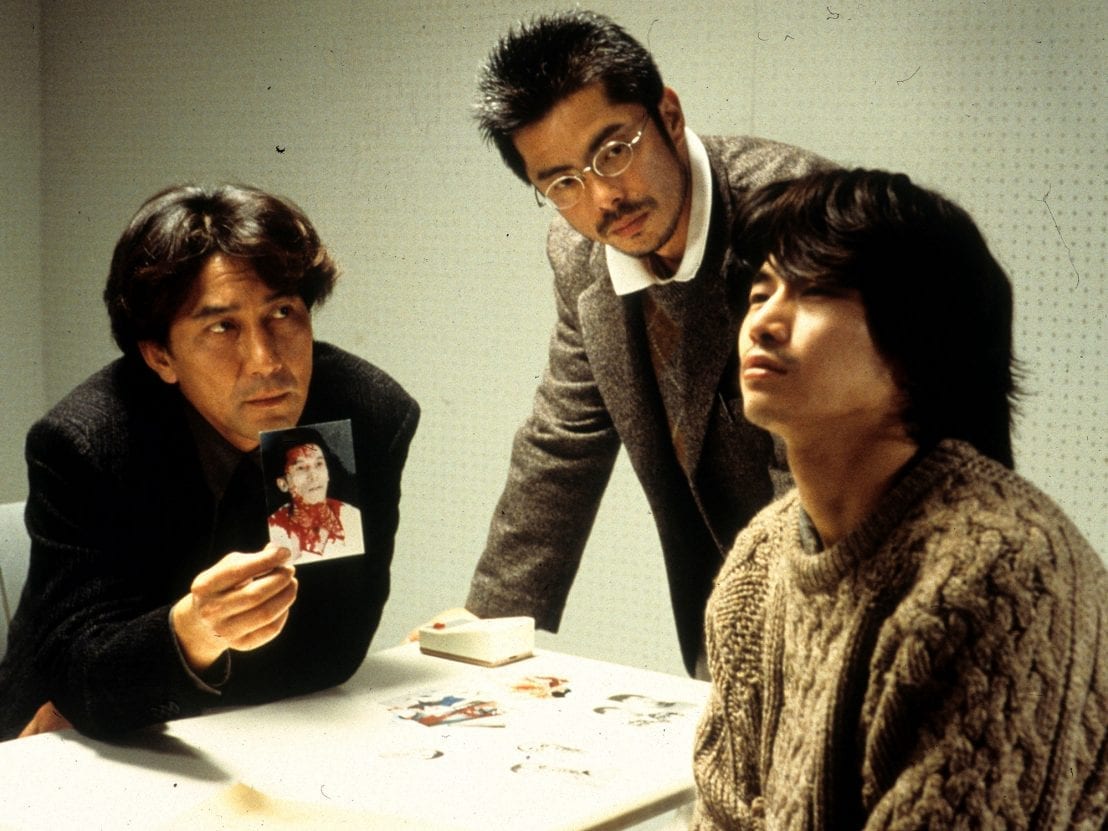Film News Editor Steph Green provides a beginner’s guide to the banquet of World Cinema
“I want to start watching more foreign-language films,” my friend recently said to me, “but I just don’t know where to start.” Not too long ago, I had a similar problem. Sure, there are the classics — the intimidating, canonical titans of World Cinema — and there are the newer films in public consciousness thanks to their Oscar-winning success, like Roma and Parasite. But what about the hundreds, thousands, of films that exist in the chasm? What about the films that aren’t sprawling epics and hard-hitting things of seriousness? And where the hell do I start?
When Bong Joon-ho accepted the Best Foreign Film Oscar for Parasite, he said: “once you overcome the 1-inch-tall barrier of subtitles, you will be introduced to so many more amazing films.” The man wasn’t wrong (he rarely is). I don’t blame us for being intimidated: the oversimplifying term ‘world cinema’ seems to imply that all cinema that isn’t English-language has to be arthouse, independent, auteur like stuff. But, as Mexican director Alfonso Cuarón also helpfully pointed out, he grew up with foriegn-language films too: Jaws, Citizen Kane, The Godfather. Going off what you already know, dipping your toes into non-English language film isn’t that intimidating at all.
I will strike down upon thee with great vengeance…
Let’s start with a super simple reference point that everyone will know: Quentin Tarantino. Whether you love or hate him, a QT flick is easy to recognise: stylised, violent, tongue-in-cheek and transgressive. All these qualities can be found in Park Chan-wook’s Oldboy, a 2003 Korean revenge thriller that Tarantino himself hailed as a masterpiece (just Park’s luck that the film premiered at the Cannes Film Festival the very year that Tarantino was the jury president).
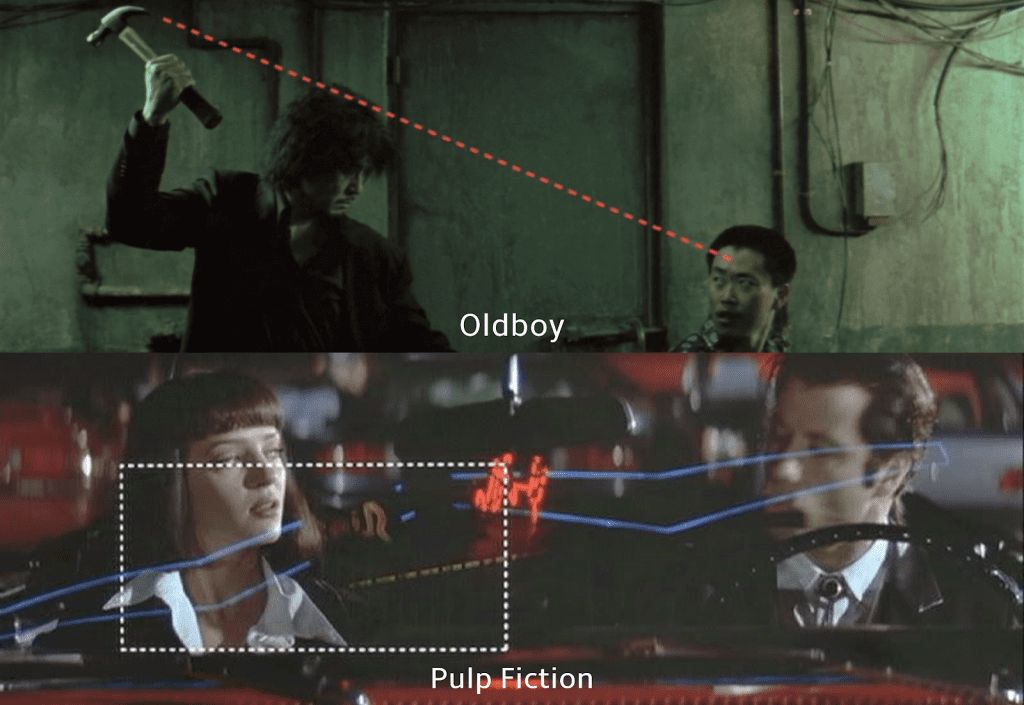
Oldboy tells the story of Oh Dae-su, a businessman who gets drunk one day and wakes up to find himself imprisoned. Fifteen years later he is suddenly released, not knowing who captured him and why. This hyper-stylised, cinematic depiction of violent revenge has undeniable Tarantino-esque parallels; one scene in which Dae-Su fights off a whole group of men in a three-minute unbroken take would give Gogo Yubari’s schoolgirl assassin battle in Kill Bill a run for its money. But the clever plot of Oldboy, of both audience and protagonist not knowing quite who they are even pursuing, echoes Christopher Nolan’s Memento too. In both films we see a man on a mission to seek revenge on an as-yet unknown enemy. And, just like in Memento, Oldboy boasts a plot twist to leave your jaw dropped.
If violence isn’t your thing, fear not. Many of us can’t deny our soft spots for the indie rom-com: films that reunite two quirky, lost, lonely souls for a powerful romance. Think (500) Days of Summer or Punch-Drunk Love. Adhering to this interesting plot structure with kooky, loveable characters is Wong Kar-wai’s Chungking Express, a 1994 film in Cantonese and Mandarin. The film presents two stories about two different lovesick policemen: one who meets a femme fatale-type drug smuggler and another who encounters a flighty snack bar worker with an affinity for the song ‘California Dreamin’. As we zoom through the neon streets of Hong Kong to learn about the quirks of these four characters, you can’t help but fall in love with their neuroses and root for their happiness.
Promising young women and female eunuchs
There’s always been a cinematic predilection with a certain trope: ‘woman develops a dual personality as she descends into madness’. In Darren Aronofksy’s Black Swan, Nina’s obsession with perfecting her ballet role leads to hallucinations and psychological torment. In David Lynch’s Mulholland Dr., burgeoning actress Betty stumbles upon a disoriented car crash victim named Rita, only for their identities to become increasingly blurred and the plot to take a surreal turn.
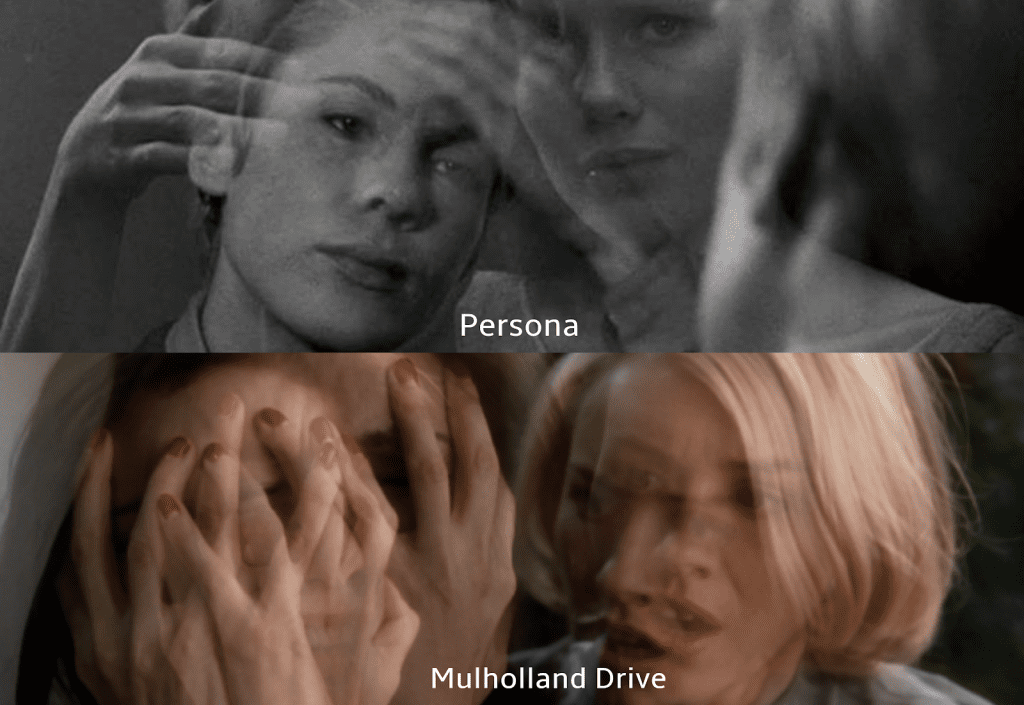
Perhaps the most striking, surreal and captivating take on this trope, though, comes from Ingmar Bergman’s Swedish-language masterpiece Persona (1966). In it, Alma is a young nurse assigned to take care of Elisabet, a famous stage actress who has suddenly stopped speaking, which doctors surmise to be of her own will as opposed to an illness. When the two women take a trip to the coast they begin to form a close bond, with the shy Alma opening up to her new silent confidante. But soon she becomes obsessed with Elisabet, and hallucinations and surreal directorial techniques make you question who is who and where the truth really lies. Exploring horror, lesbianism, identity, motherhood and vampirism, Persona packs an enormous punch as both a thing to be analysed and a gripping piece of entertainment.
Moreover, a genre that has increased tenfold in popularity in the past few years is the period lesbian drama. From forbidden love in 1950’s New York in Carol to a more comedic take on courtly love in The Favourite and even the TV show Gentleman Jack, this is a specific genre that is having a real moment, exploring how lesbian women have always existed.
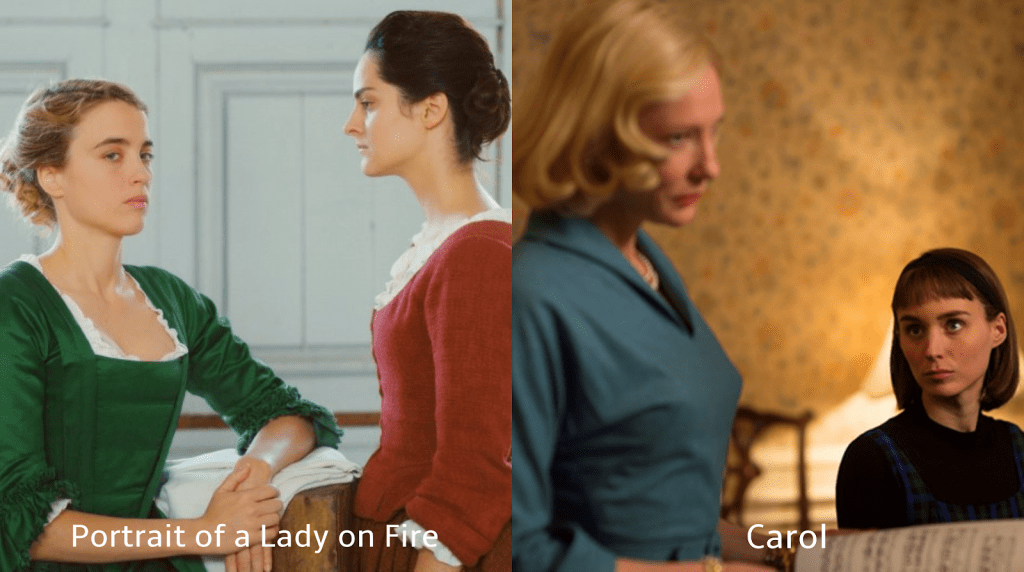
As well as the aforementioned director Park Chan-wook (with his 2016 film The Handmaiden set in 1930s Korea), French director Celina Sciamma just last year offered up her own interpretation of period lesbian romance. Enter Portrait of a Lady on Fire: a heady, romantic thing of beauty set on sealapped shores off the coast of Brittany in the late 1700s. In this restrained and naturalistic French language film, Marianne is a painter who is hired to paint Héloïse, a young woman about to be married to a stranger. But Marianne must paint her in secret, resulting in a lot of lingering glances, growing lust and liberating love between the pair. The sheer beauty of the filmmaking, the goosebump-inducing eroticism of Marianne’s paintbrush touching the canvas, echoes how in these period settings lesbian women created their own blissful spaces and utopias; just like the gorgeous, grainy, super-16mm film used to capture Thérèse and Carol’s romance in Carol. Other foreign-language lesbian dramas to explore include Elisa y Marcela, I, Olga Hepnarová, Blue is the Warmest Colour and Thelma.
Hardboiled detectives and heinous crimes
Finally: recommendations for the David Fincher aficionados among us, who love slow-burn murder mystery investigations in the vein of Se7en, Zodiac, Gone Girl and Mindhunter. A hidden gem that took my breath away with its boldness was Kiyoshi Kurosawa’s Cure, a 1997 Japanese-language film with many thematic parallels to Fincher’s Se7en, which came out the same year.
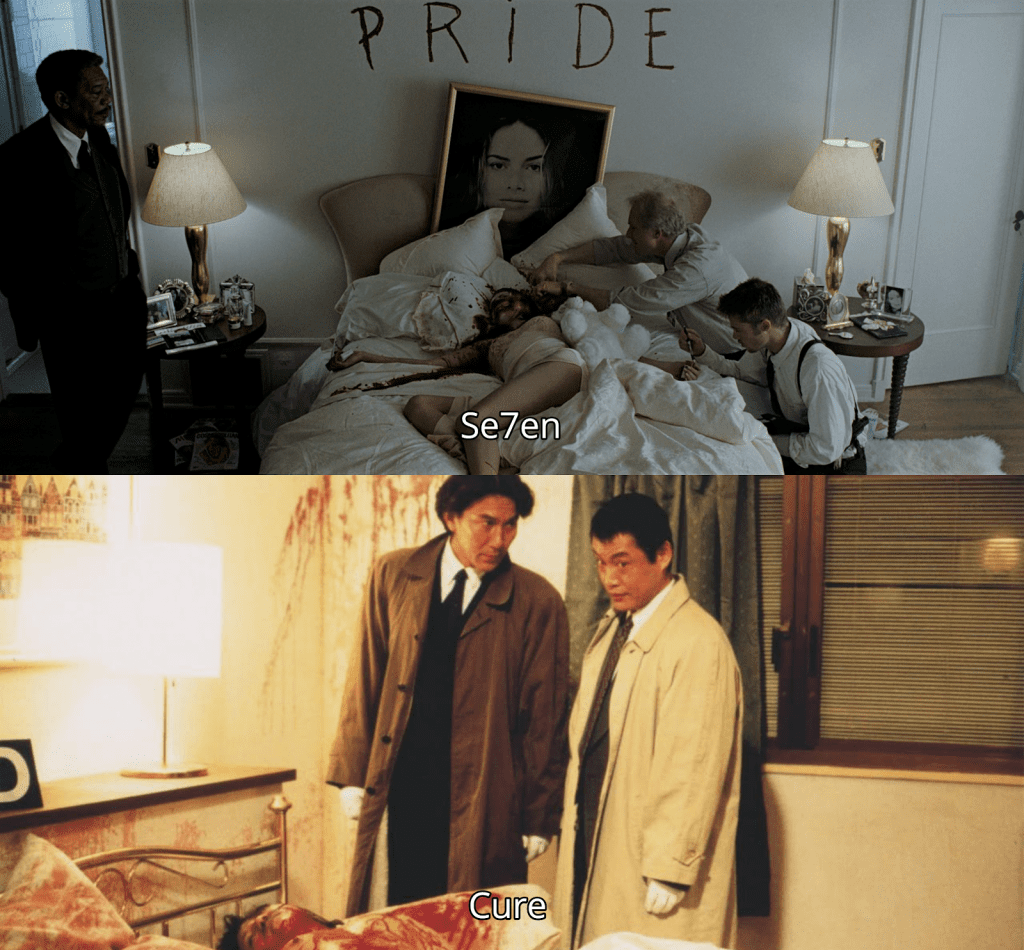
In it, an emotionally repressed detective, Kenichie Takabe, is investigating a series of gruesome murders in which each victim is found with an ‘X’ carved into their throat. In each case, the suspect is found close to the victim, dazed and unable to explain why they committed the murder. Takabe, alongside a psychologist named Sakuma, discovers that one man is a common thread between each murder — however, his ability to get into their minds soon proves fateful. A gripping plot but also a nihilistic piece of social criticism and a philosophical treatise, Cure is astoundingly squirm-inducing.
Bong Joon-ho has stated that Cure is one of his favourite films, no doubt influencing his 2003 South Korean serial killer drama Memories of a Murder. Revealing the real-life story of detectives doggedly searching for an elusive serial killer, it has many echoes to the languorous frustration felt in Fincher’s own true-crime manhunt, Zodiac.
Where to watch world cinema
Though Netflix is certainly expanding its repertoire of foreign language cinema, it has some catching up to do considering the wealth of streaming services showing a mix of forgotten gems, cult classics, award-winning epics and new releases. Try MUBI for a small curation of thirty films a month, BFI Player for a truly global outlook and huge breadth of choice, and Curzon Home Cinema for cinema-fresh releases.
Films mentioned:
Chungking Express (DVD); Persona (Amazon); Cure (DVD); Memories of a Murder; Elisa y Marcela (Netflix); Roma (Netflix); Portrait of a Lady on Fire (MUBI); I, Olga Hepnarová (MUBI); Blue is the Warmest Colour (BFI Player); Thelma (Amazon); Parasite (BFI Player); Oldboy (Curzon Home Cinema)
Words by Steph Green
This article was originally published as part of The Indiependent’s May 2020 charity magazine, which raised money for the British Lung Foundation. Find out more here.
